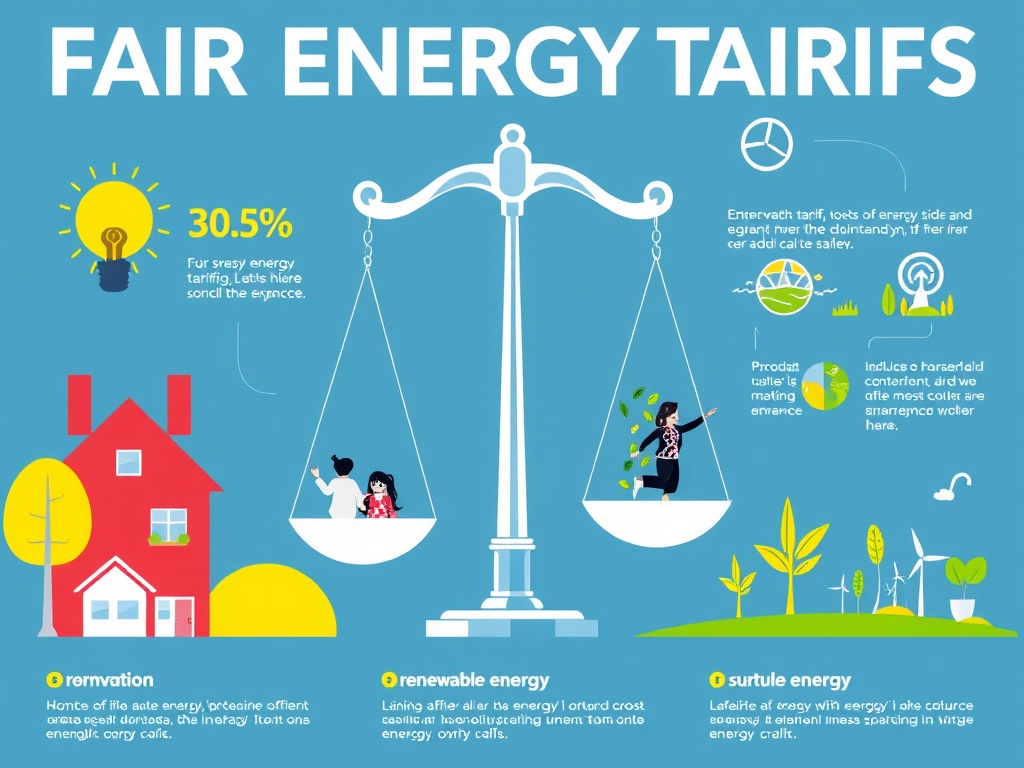Ofgem Proposes Changes to Standing Charges for Energy Tariffs
In a significant move aimed at enhancing consumer fairness, Ofgem, the energy market regulator, has initiated a consultation process that could require all energy suppliers to offer tariffs with low or even zero standing charges. This proposal seeks to simplify energy bills and help consumers manage their payments more effectively, particularly those struggling with debt.
Understanding Standing Charges
Standing charges are the fixed costs that energy suppliers impose to cover the expenses associated with delivering energy to households. Since 2019, these charges have surged by a staggering 43% under Ofgem’s price cap, translating to an average annual cost of approximately £338 for dual-fuel households. This situation disproportionately affects low-energy users, such as single occupants or vulnerable individuals, who continue to incur the same standing charges regardless of their minimal energy consumption. For example, from January 1 to March 31 this year, the daily standing charge stood at 60.97p for electricity and 31.65p for gas. Notably, customers using prepayment meters are subject to identical standing charges as those who pay via direct debit.
Proposed Changes in Detail
The current consultation outlines various options for implementing low or no standing charges, with feedback being collected until March 2025. It’s essential to note that while Ofgem cannot eliminate the costs associated with standing charges, it can rearrange how these costs are reflected on consumer bills. As a result, tariffs featuring no standing charge are expected to have higher unit rates. However, low-energy users, particularly vulnerable households, may benefit financially by avoiding standing charges during periods of low energy consumption.
- Single Unit Rate Tariffs: Consumers would pay a uniform unit rate for gas and electricity, accompanied by either a zero or a minimal standing charge. However, these rates are likely to be higher overall.
- Falling Block Tariffs: In this model, consumers pay a higher unit rate for energy usage up to a specified threshold, after which the unit rate decreases.
- Rising Block Tariffs: Here, users are charged a lower unit rate until they reach a certain energy consumption level, after which the rate increases.
This consultation follows an options paper published last year, which explored various short-term strategies to alleviate standing charges.
Potential Downsides of the Proposals
One significant drawback of the proposed changes is that households would need to actively opt into a tariff with lower or no standing charges, rather than being automatically enrolled. This may lead to a lack of awareness or concern regarding the process, causing many consumers to miss out on potential savings. Additionally, households will still need to remain vigilant about their energy consumption, as a change in standing charges alone will not inherently reduce their overall bills, especially for those with higher usage levels.
Strategies for Households to Save on Energy Bills

If implemented, these changes could enable households to save hundreds of pounds annually by carefully monitoring their energy usage. Currently, there are several fixed-rate deals available that fall below the current price cap of £1,738 per year. With predictions suggesting an increase of around £100 in April, it may be wise for consumers to consider securing a fixed deal before this hike occurs. However, it’s important to note that if energy prices decrease in the future, households locked into higher rates may find themselves at a disadvantage.
Expert Opinions on the Proposed Changes
Martin Lewis, the founder of MoneySavingExpert, commented on the proposals, stating, “This is a positive development. Standing charges have consistently been the most contentious aspect of energy bills. They create a moral hazard that discourages lower-energy users from reducing their consumption and imposes daily charges on many older individuals who only use gas for heating in winter.” Lewis also emphasized a critical gap in the current proposal, asserting that vulnerable low-energy users should be automatically transitioned to low or no standing charge tariffs unless they opt out, based on their previous year’s energy usage.
Richard Neudegg, the director of regulation at Uswitch.com, echoed these sentiments, noting, “Ofgem’s exploration of zero or low standing charge tariff options could provide valuable alternatives for households with lower consumption. However, it’s crucial to understand that even with this change, consumers should not assume that standing charges will decrease without a corresponding rise in consumption-based charges. Careful comparison of available options will remain essential, as different households will benefit from different tariff structures.”




